Leading by Example: Guiding Your Kids Toward Safety
As parents, you are your child’s first and most influential role models. Your actions speak louder than words, especially when it comes to teaching safety. Leading by example is one of the most effective ways to instill good habits in your children. When they see you practicing what you preach, they’re more likely to follow suit. In this blog post, we’ll explore various ways you can lead by example and help your kids understand the importance of safety. We’ll also share practical tips and fun ideas to make learning about safety enjoyable for the whole family.
Demonstrate Safe Behavior Daily

You don’t need to make grand gestures to teach your children about safety. Everyday actions can be powerful lessons. Start with simple things, like buckling up your seatbelt as soon as you get into the car. Explain why it’s important and let your kids see you do it every time. When they see you consistently practicing this habit, they’ll understand that it’s a non-negotiable part of driving or riding in a car.
Another easy way to demonstrate safe behavior is by following traffic rules. Always use crosswalks, look both ways before crossing the street, and obey traffic signals. When your children walk with you, talk about why these rules exist and how they keep everyone safe. It’s a great opportunity to turn an everyday activity into a learning moment. Plus, it reinforces the idea that safety is something you take seriously, not just something you talk about.
Create a Safe Home Environment
Your home is where your children spend most of their time, so it’s crucial to make it a safe environment. Start by childproofing your home to prevent accidents. Secure heavy furniture to the wall, cover electrical outlets, and keep hazardous materials out of reach. But don’t stop there—use these actions as teaching moments. Show your children what you’re doing and explain why it’s important. For example, when you’re securing a bookshelf, you can say, “We’re doing this so it won’t fall and hurt anyone.”
Additionally, involve your children in maintaining a safe home. Encourage them to help with tasks like tidying up toys to prevent tripping hazards. Make it a fun activity by turning it into a game—who can pick up the most toys in a minute? This not only teaches them about safety but also instills a sense of responsibility and teamwork. When they see you valuing a safe environment, they’ll be more likely to adopt those values themselves.
Communicate Openly About Safety
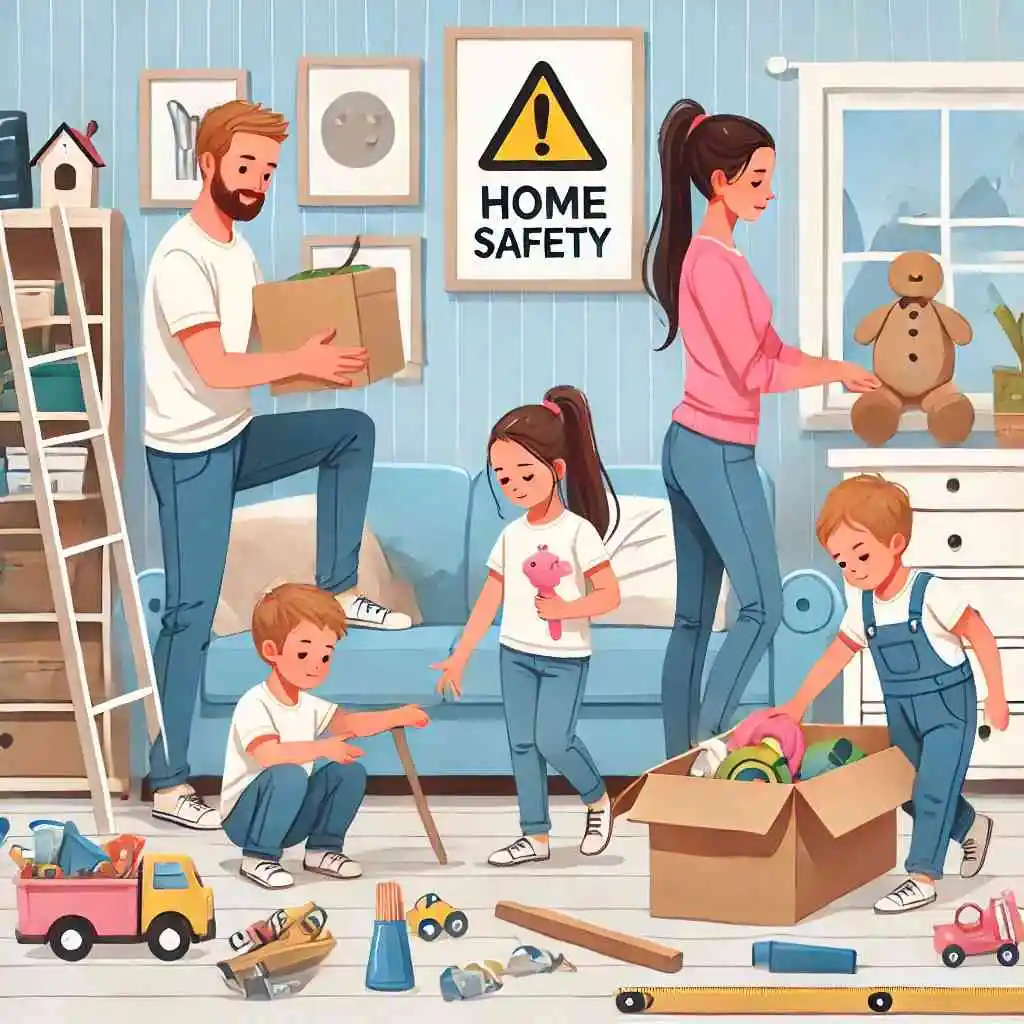
Effective communication is key to leading by example. Talk to your children about safety regularly, not just when an issue arises. Use everyday situations to discuss potential hazards and how to avoid them. For instance, if you’re cooking together, explain why you use oven mitts and keep pot handles turned inward. These small conversations can have a big impact.
It’s also important to listen to your children’s concerns and questions about safety. Create an open environment where they feel comfortable sharing their thoughts. When they come to you with questions, take the time to answer them thoughtfully. This shows that you value their input and encourages them to be proactive about their own safety. By maintaining open lines of communication, you’re not only teaching them about safety but also building trust and fostering a supportive relationship.
Model Positive Attitudes Toward Safety
Your attitude towards safety can influence your children’s perceptions. If you approach safety with a positive mindset, your children are likely to do the same. Make safety a part of your family’s daily routine and celebrate safe behaviors. For example, when your child remembers to wear their helmet while biking, praise them for their smart choice. Positive reinforcement can be a powerful motivator.
You can also make learning about safety fun by incorporating it into family activities. Plan a “Safety Day” where you play games, watch educational videos, and do hands-on activities related to safety. This not only reinforces important concepts but also shows that safety is a priority for your family. When children see you engaging with safety in a positive and enjoyable way, they’ll be more inclined to adopt those behaviors themselves.
Stay Informed and Updated

Safety guidelines and recommendations can change over time, so it’s important to stay informed. Make it a habit to read up on the latest safety tips and best practices. This shows your children that safety is an ongoing process, not a one-time lesson. Share what you learn with your family and discuss how you can implement new safety measures together.
For example, if you read about new car seat guidelines, explain the changes to your children and involve them in adjusting their seats accordingly. This not only keeps them safe but also reinforces the idea that you’re all learning and growing together. Staying informed demonstrates that you’re committed to their safety and willing to adapt as needed.
Lead by Example in the Community
Your influence extends beyond your home. Lead by example in your community as well. Volunteer for safety-related activities at your child’s school, such as crossing guard duty or organizing safety workshops. When your children see you actively participating in community safety, they’ll understand that it’s an important value. It also gives them the opportunity to see how safety practices apply in different settings.
Encourage your children to get involved in community safety activities, too. Participate in local events like bike safety rodeos or fire station open houses. These experiences can reinforce the lessons you’re teaching at home and provide practical, hands-on learning opportunities. Plus, they’re a great way to spend quality time together while emphasizing the importance of safety.
Encourage Peer Influence

Children are often influenced by their peers, so encourage positive peer interactions regarding safety. Arrange playdates with families who share your safety values. When your children see their friends practicing safe behaviors, they’re more likely to follow suit. This peer influence can be a powerful tool in reinforcing the safety lessons you’re teaching at home.
You can also encourage older siblings to set a good example for younger ones. This not only helps the younger children learn but also reinforces the lessons for the older ones. When safety becomes a family affair, everyone benefits. It fosters a sense of responsibility and helps children understand that they play an important role in keeping themselves and others safe.
Conclusion
Leading by example is one of the most effective ways to teach your children about safety. By demonstrating safe behaviors, creating a safe home environment, communicating openly, modeling positive attitudes, staying informed, leading in the community, and encouraging positive peer influence, you can instill important safety values in your children. Remember, the goal is to make safety a natural and enjoyable part of your family’s daily life. When children see you prioritizing safety, they’ll be more likely to do the same. Together, you can create a safe and happy environment for everyone.
Establishing Trust and Communication
Creating a safe and open environment for your children starts with establishing trust and communication. As a parent or caregiver, you play a crucial role in fostering a sense of security and understanding in your child’s life. Here, we’ll explore some effective ways to build that trust and maintain clear communication with your little ones. Let’s dive in!
Open the Lines of Communication Early

You can start building trust with your children by opening the lines of communication early on. When kids know they can talk to you about anything, they feel secure and understood. Begin by talking to them about their day, their interests, and their feelings. You don’t have to wait for a big problem to start these conversations. Make it a daily habit to ask open-ended questions like, “What was the best part of your day?” or “How did that make you feel?” This shows your child that you care about their thoughts and experiences.
Listen Without Judgment
One of the most important aspects of building trust is listening without judgment. When your child talks to you, give them your full attention. Put away distractions like your phone or the TV, and focus on what they’re saying. Nod, smile, and make eye contact to show you’re engaged. Avoid interrupting or rushing them. This creates a safe space where they feel comfortable sharing their thoughts and feelings. By listening actively and empathetically, you validate their emotions and experiences, reinforcing their trust in you.
Be Honest and Transparent
Children appreciate honesty, even if the truth is difficult. Being honest with your kids helps build a foundation of trust. When they ask questions, answer them truthfully in an age-appropriate way. If you don’t know the answer, it’s okay to say so and find out together. Transparency also means admitting when you’ve made a mistake. Apologizing to your child when you’re wrong shows them that everyone makes mistakes and that it’s important to own up to them. This openness encourages them to be honest with you in return.
Set Consistent Boundaries
Consistency is key when it comes to establishing trust. Children need to know what to expect from you. Setting clear and consistent boundaries helps them feel safe and understand the limits of acceptable behavior. Explain the reasons behind the rules and the consequences for breaking them. This helps your child see the fairness in your decisions and trust your guidance. Stick to your word and follow through with consequences calmly and fairly, which reinforces their understanding of the boundaries.
Create a Supportive Environment

Creating a supportive environment is essential for open communication. Let your child know that they can come to you with any problem, big or small. Reassure them that you’re there to help, not to judge or punish. Encourage them to express their feelings and thoughts freely. When they do share something with you, acknowledge their courage and thank them for trusting you. This positive reinforcement makes them more likely to open up to you in the future.
Use Stories and Examples
Sometimes, it can be easier to communicate important lessons through stories and examples. Children often relate better to scenarios that involve characters they love or situations they understand. Use books, movies, or personal anecdotes to illustrate points about honesty, trust, and communication. Discuss the characters’ actions and decisions, and ask your child how they would handle similar situations. This not only makes the conversation more engaging but also helps them apply these lessons in their own lives.
Practice Patience and Empathy
Patience and empathy go a long way in building trust. Children are still learning how to express themselves and navigate their emotions. Be patient when they struggle to articulate their thoughts or when they act out because they’re upset. Try to see things from their perspective and validate their feelings. Saying things like, “I understand that you’re upset because…” helps them feel heard and understood. Your empathy shows them that you’re a safe person to talk to, even when they’re having a hard time.
Encourage Independence

Encouraging independence is another way to build trust. Let your child make choices and decisions appropriate for their age. This shows them that you trust their judgment and believe in their abilities. Whether it’s choosing their clothes for the day or deciding how to spend their free time, these small decisions build their confidence and independence. Support them in their choices and be there to guide them when needed. This balance of freedom and support strengthens the trust between you and your child.
Keep Communication Positive
Keeping communication positive doesn’t mean avoiding difficult conversations; it means approaching them with a constructive attitude. When discussing problems or giving feedback, focus on the behavior, not the child. Use positive language and offer solutions rather than just pointing out mistakes. For example, instead of saying, “You never clean your room,” try, “I noticed your room is messy. Let’s work together to tidy it up.” This approach helps your child feel supported and motivated to improve.
Celebrate Achievements Together
Celebrating achievements, no matter how small, can significantly boost your child’s confidence and trust in you. When they accomplish something, acknowledge their effort and success. Celebrate milestones and everyday victories alike. This shows your child that you notice and appreciate their hard work, reinforcing their trust in your support. Whether it’s a high-five for finishing their homework or a special treat for a good report card, these moments of celebration strengthen your bond.
Be a Role Model
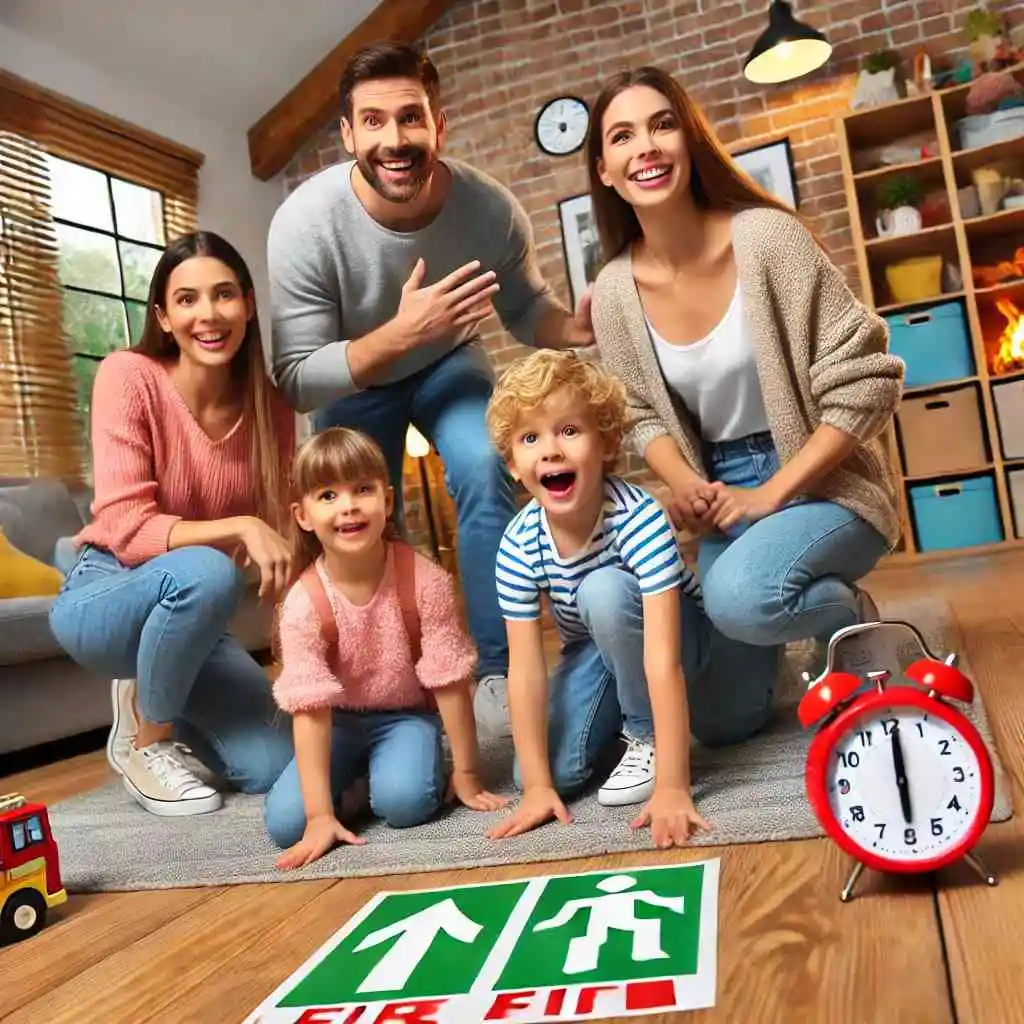
Lastly, be a role model for trust and communication. Your child learns a lot by watching how you interact with others. Show them how to communicate effectively and respectfully. Demonstrate honesty, empathy, and active listening in your interactions. When they see you practicing these skills, they’ll be more likely to adopt them. Your behavior sets the standard for how they should treat others and expect to be treated, creating a cycle of trust and open communication.
In summary, establishing trust and communication with your child is a continuous process that requires patience, honesty, and empathy. By creating an open, supportive environment, listening actively, and setting consistent boundaries, you help your child feel secure and understood. Encouraging independence, using positive reinforcement, and being a role model for good communication practices further strengthen this bond. Remember, the foundation of a trusting relationship is built on everyday interactions and the ongoing effort to connect with your child.
Teaching Emergency Preparedness
Teaching your children about emergency preparedness might seem daunting, but it can be a fun and empowering experience for both you and your kids. By incorporating simple lessons into everyday activities, you can equip your children with the skills they need to handle unexpected situations confidently and calmly. Here are some practical tips and activities to help you get started on this important journey.
Make Learning Fun with Games and Role-Playing
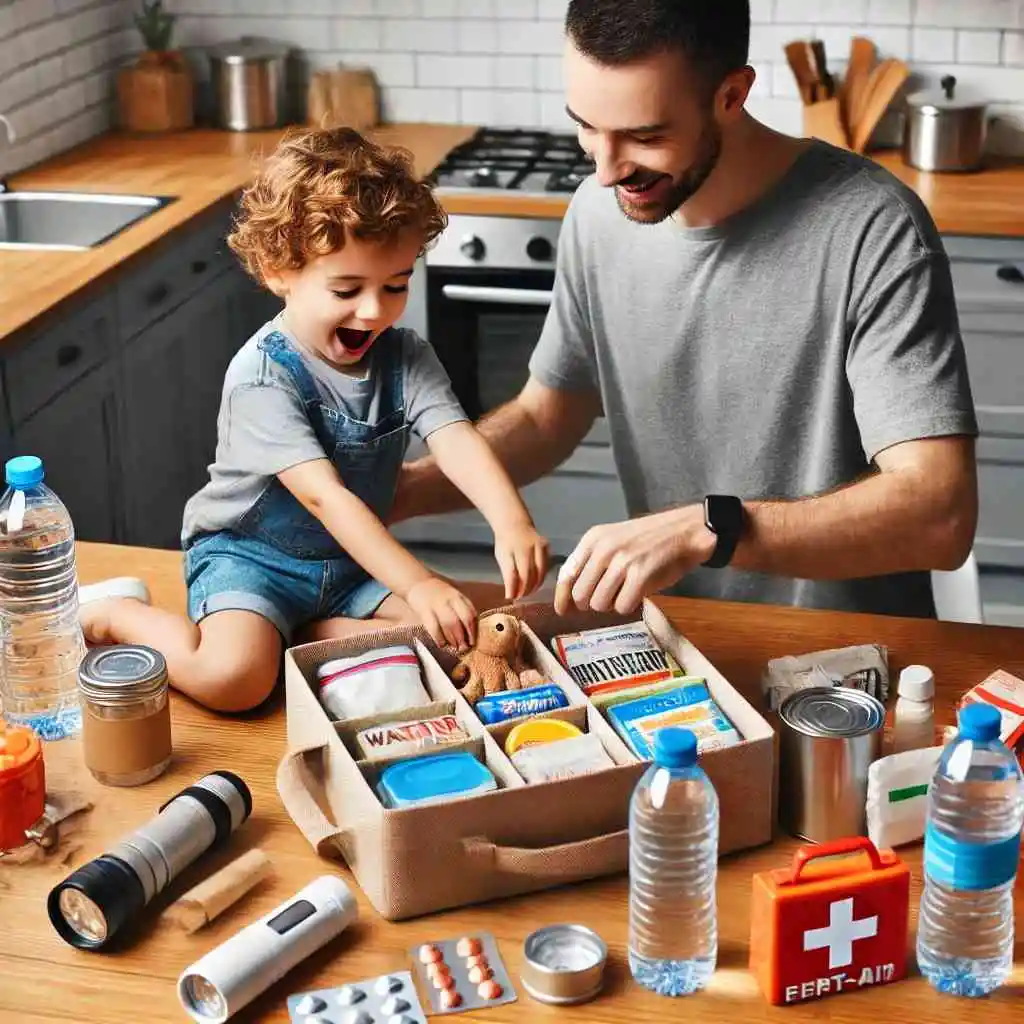
One of the best ways to teach children about emergency preparedness is through games and role-playing activities. Kids learn best when they are having fun, so turn safety drills into exciting adventures. Create scenarios where your child can practice what to do in case of a fire, earthquake, or other emergencies. For example, you could play a game where you pretend there’s a fire in the house, and your child has to find the safest way to exit. Use a stopwatch to make it a race, and offer rewards for successfully completing the drill. This not only makes the lesson enjoyable but also helps reinforce the actions they need to take in real-life situations.
You can also use role-playing to teach kids how to react if they get lost in a public place. Set up a mini “store” or “park” in your living room and practice what to do if they can’t find you. Teach them to stay calm, look for a security guard or a store employee, and show them how to use emergency contact information. Role-playing different scenarios will help your child feel more prepared and less scared if they ever find themselves in a similar situation.
Create an Emergency Kit Together
Another engaging way to teach emergency preparedness is by assembling an emergency kit together. Involve your child in gathering and organizing the supplies. Explain the importance of each item and how it could be used during an emergency. Start with basic items like water, non-perishable food, a flashlight, and a first-aid kit. Let your child choose a few of their favorite snacks or a small toy to add to the kit. This makes the process more personal and helps them understand that the kit is there to keep them safe.
As you build the kit, discuss different types of emergencies and what specific items might be needed for each one. For example, talk about the importance of having a whistle in case they need to signal for help or why it’s essential to have a battery-operated radio. By involving your child in the process, you’re teaching them valuable skills and giving them a sense of responsibility for their own safety.
Practice Communication and Emergency Contacts

Communication is key during emergencies, and it’s crucial that your child knows how to reach you and other trusted adults. Start by teaching your child your phone number and address. You can make this a fun activity by turning it into a song or a rhyme. Repetition and practice are essential, so incorporate these lessons into your daily routine.
It’s also important to create a list of emergency contacts. Include phone numbers for family members, neighbors, and emergency services. Keep this list in a place where your child can easily access it, like on the refrigerator or near the phone. Practice with your child how to call each number and what to say. Role-play different scenarios where they might need to use this information, such as calling for help if someone is hurt or reporting a fire.
In addition to memorizing phone numbers, teach your child how to use different communication devices. Show them how to use a landline, a cell phone, and even how to send a text message. Explain that during certain emergencies, they might need to use these devices to reach you or other adults.
Reinforce Lessons with Stories and Books
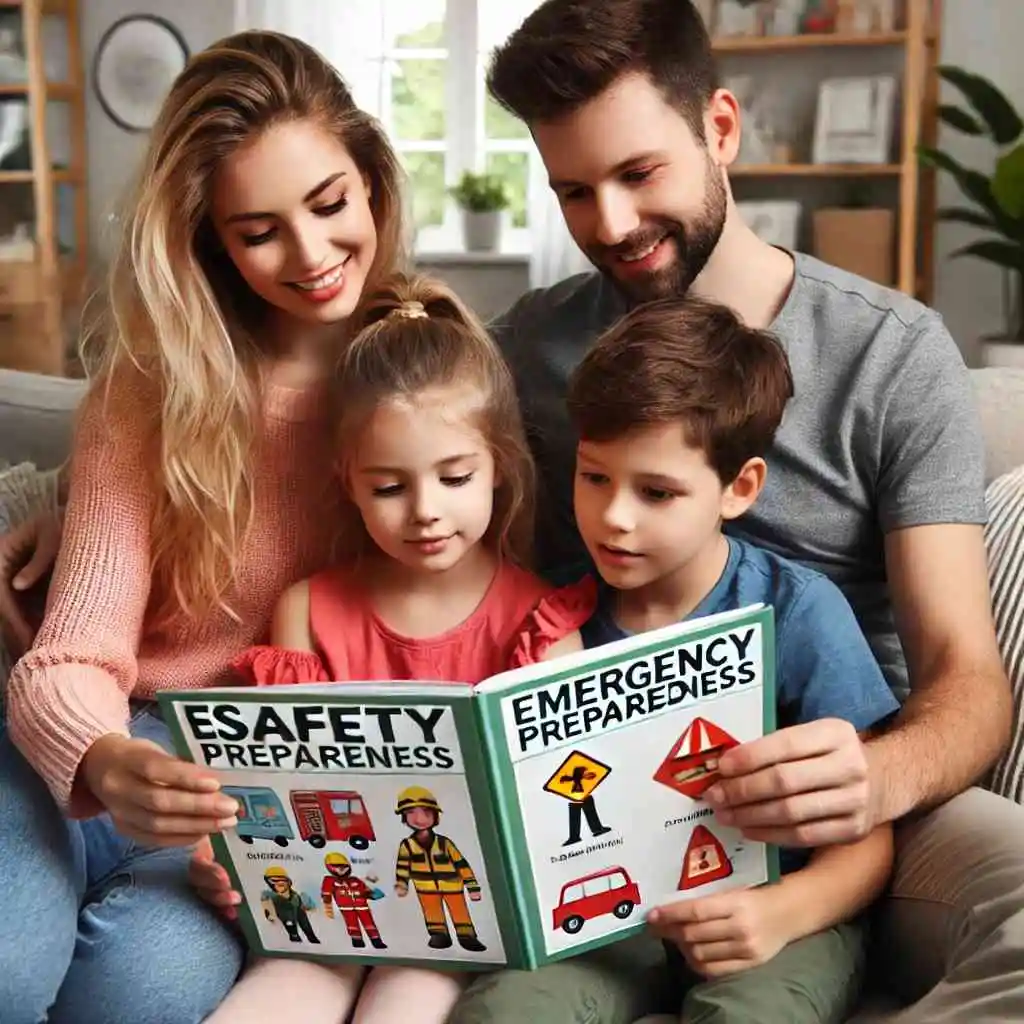
Children love stories, and using books to teach emergency preparedness can be both educational and entertaining. Choose age-appropriate books that focus on different types of emergencies and how to handle them. As you read together, discuss the actions the characters take and how your child can apply those lessons in real life.
For example, if you’re reading a story about a character who experiences a storm, talk about what your child should do during a storm. Discuss the importance of staying indoors, finding a safe spot, and avoiding windows. Use the story as a starting point for a broader conversation about weather-related emergencies and how to stay safe.
You can also create your own stories with your child as the hero. Together, come up with different emergency scenarios and brainstorm ways to handle them. This not only reinforces the lessons but also empowers your child by making them an active participant in their own safety.
Review and Refresh Regularly
Emergency preparedness is not a one-time lesson; it’s something that needs to be reviewed and refreshed regularly. Schedule regular “safety days” where you and your child revisit the emergency plan, practice drills, and check the emergency kit. Update the kit as needed, replacing expired items and adding new supplies.
Use these safety days as an opportunity to introduce new concepts and scenarios. As your child grows older, they can handle more complex information and take on additional responsibilities. Keep the activities fun and engaging to maintain their interest and reinforce the importance of being prepared.
Empower Your Child with Knowledge
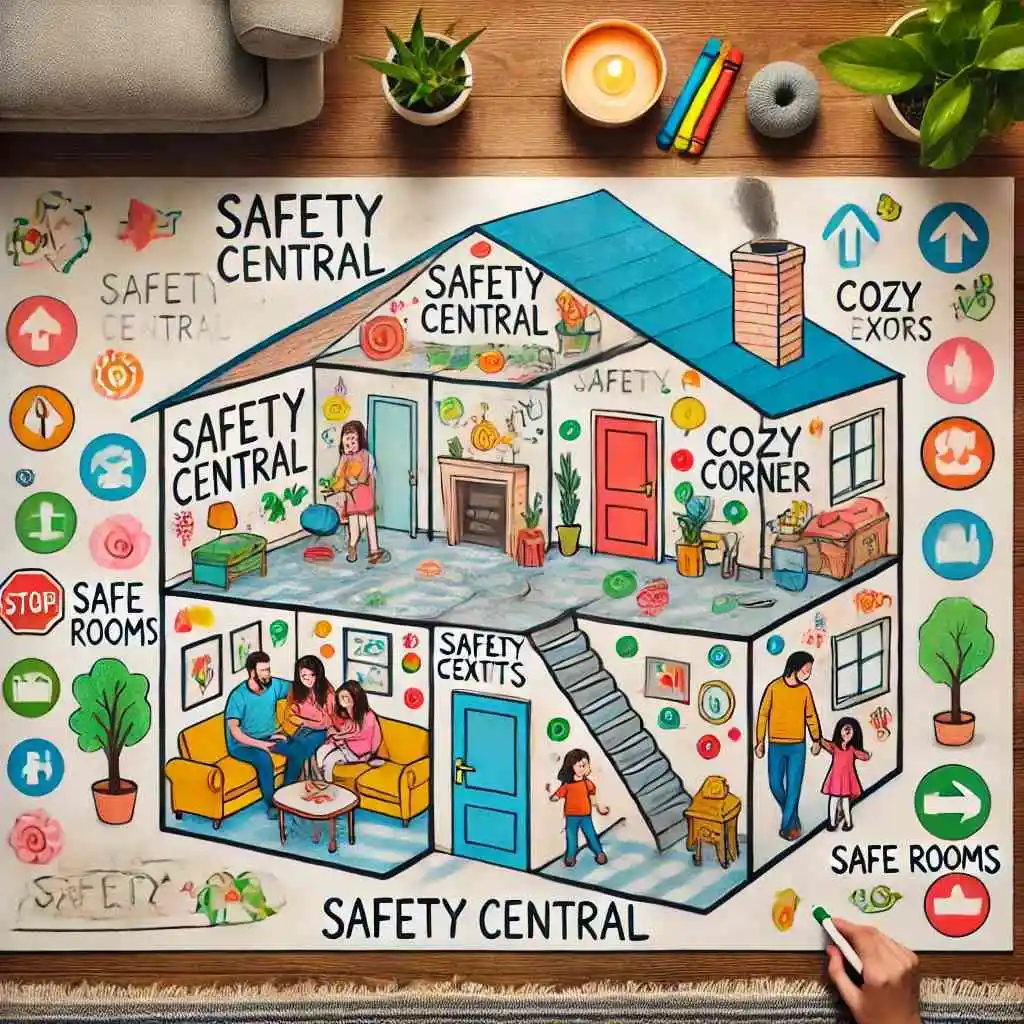
Ultimately, teaching emergency preparedness is about empowering your child with the knowledge and skills they need to stay safe. By incorporating fun activities, role-playing, and regular practice into your routine, you’re helping your child build confidence and resilience. Remember, the goal is to make these lessons an ongoing conversation rather than a one-time lecture. With patience and creativity, you can ensure your child is ready to handle any emergency with calmness and confidence.
Involving Kids in Safety Planning
Ensuring your child’s safety is a top priority for every parent. One effective way to do this is by involving kids in safety planning. When children are part of the process, they feel empowered and more likely to remember and follow safety rules. Plus, it’s a great way to bond and have fun while learning! Here’s how you can make safety planning an engaging and educational experience for your little ones.
Make Safety a Fun Adventure

Kids love adventures, and you can turn safety planning into one! Start by creating a map of your home and mark important safety spots, like fire exits and safe rooms. Use colorful markers and stickers to make the map visually appealing. You can even give each spot a fun name, like “Safety Central” for the fire exit. Encourage your kids to help you decorate the map and explain why each spot is important.
Next, organize a treasure hunt where the treasure is knowledge about safety. Hide clues around the house that lead to different safety spots. Each clue can contain a simple safety tip. For example, a clue near the kitchen could remind them to stay away from hot stoves. This interactive activity not only teaches safety but also keeps them engaged and excited.
Role-Playing Scenarios
Role-playing is a fantastic way to teach kids about safety. It allows them to practice what they’ve learned in a controlled environment. You can start by discussing various scenarios, such as what to do if they get lost in a store or if there’s a fire at home. Then, act out these situations with them.
For instance, you can pretend to be a stranger offering them candy and see how they respond. Teach them to say, “No, thank you,” and find a trusted adult. You can also practice fire drills by setting a timer and having everyone evacuate the house quickly and calmly. Make it a game by timing how fast they can get to the safe spot.
Create a Family Safety Kit
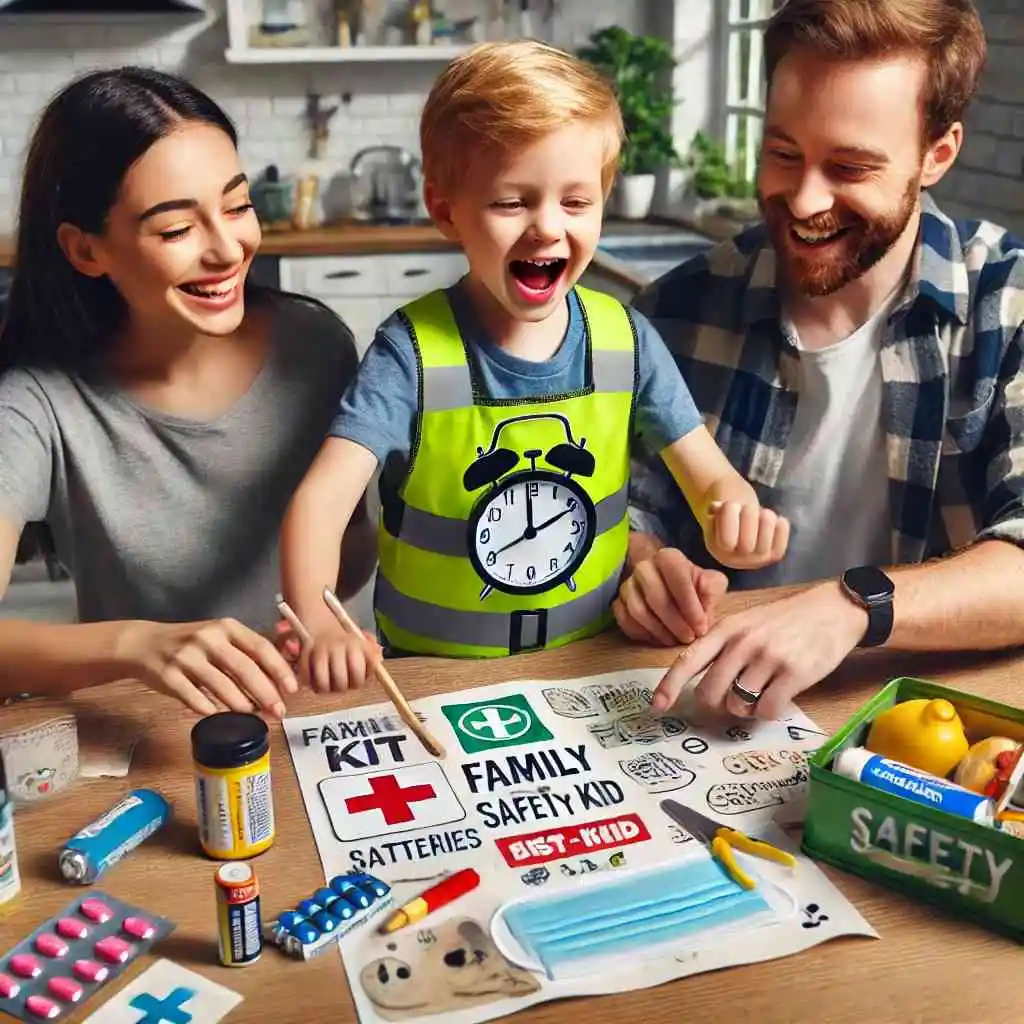
Involve your kids in creating a family safety kit. Explain that this kit is like a superhero’s toolbox, filled with items that can help keep everyone safe. Let them choose some of the items, like a flashlight, batteries, a first-aid kit, and bottled water. You can also include their favorite snacks and a small toy to comfort them in case of an emergency.
To make it more engaging, you can decorate the safety kit together. Use stickers, drawings, or colorful tape to make it unique and recognizable. Place the kit in an accessible location and explain why each item is important. Revisit the kit periodically to ensure everything is in working order and to refresh their memory on its contents.
Safety Songs and Rhymes
Music and rhymes can be powerful tools for teaching safety. Create simple, catchy songs about safety rules and sing them together. For example, you can make up a song about looking both ways before crossing the street. The melody and repetition will help them remember the rules better.
You can also incorporate rhymes and chants into daily routines. For instance, when washing hands, you can chant, “Scrub-a-dub, scrub-a-dub, wash away the germs,” to remind them of the importance of hygiene. Make up silly dances to go along with the songs, turning safety lessons into a fun and memorable experience.
Interactive Safety Games
Games are a great way to reinforce safety lessons. Create a board game with safety-themed challenges. For each challenge, they have to demonstrate or explain a safety rule to advance. You can include questions like, “What should you do if you smell smoke?” or “How do you call 911?”
Another idea is to play “Safety Simon Says.” Give commands related to safety, such as “Simon says, stop, drop, and roll,” or “Simon says, find the nearest exit.” This game helps them practice safety actions in a fun and engaging way.
Storytime with a Safety Twist

Incorporate safety lessons into storytime by reading books that focus on safety topics. Choose stories with relatable characters and situations. After reading, discuss the story and ask questions to ensure they understood the safety messages. For example, if the story is about fire safety, ask, “What should you do if you see smoke?”
You can also create your own safety stories together. Let your kids come up with characters and plotlines that involve safety challenges. Writing and illustrating the stories themselves will help reinforce the lessons and give them a sense of ownership.
Regular Safety Meetings
Hold regular family safety meetings to review and update your safety plans. Involve your kids in these discussions and encourage them to share their thoughts and ideas. You can start by revisiting the safety map and kit, ensuring everything is up to date.
Use these meetings to introduce new safety topics, like internet safety or stranger danger. Make it interactive by using visual aids, such as posters or videos, to illustrate the concepts. Keep the tone light-hearted and positive, emphasizing that safety planning is a team effort.
By involving kids in safety planning, you’re not only teaching them valuable life skills but also building their confidence and sense of responsibility. Remember, the key is to make the process fun and engaging, turning safety into an exciting adventure for the whole family.



